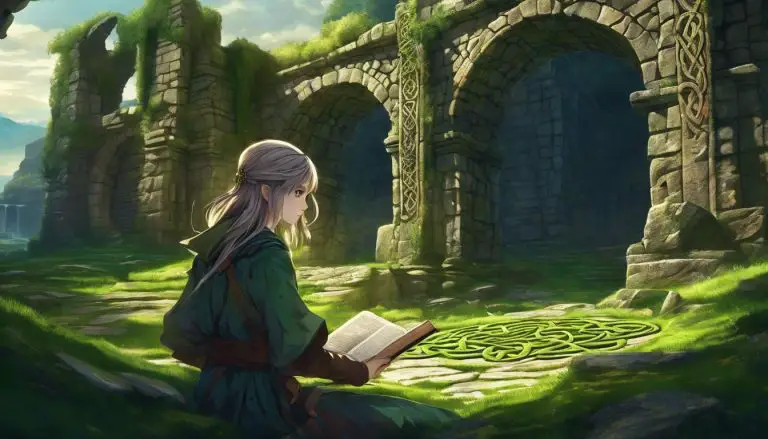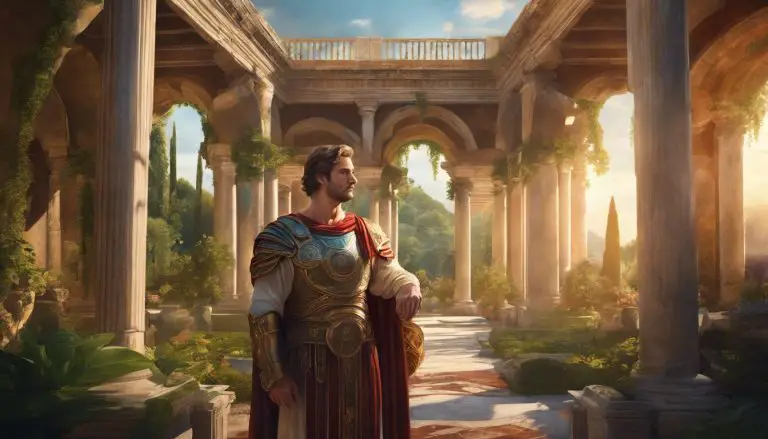What Color Was Originally Associated with St. Patrick’s Day? Uncovering the History of St. Patrick’s Blue and the Traditional Color of the Holiday
Many people wear green to celebrate St. Patrick’s Day, but long ago, the special color for this holiday was blue. Back in the 13th century, pictures showed St. Patrick in a blue robe instead of green clothes.
This old shade of blue is named “St. Patrick’s blue.” Later on, around the 1780s, folks started using green instead of blue to mark this fun day. Ireland even has an official color called azure blue because it meant a lot in their history.
Blue was very important when thinking about St. Patrick and his holiday before everybody switched to wearing green shamrocks and clothes. The change happened because people wanted to show their love for Ireland with the color green during political events around the 1780s.
This story shows how what we think we know can change with time—and colors! Let’s find out more about why we now reach for our brightest greens every March 17th!
Key Takeaways
- The original color of St. Patrick’s Day was blue, known as St. Patrick’s blue.
- Green replaced blue as the official color of the holiday around the 1780s.
- Popular symbols like shamrocks and wearing green today stem from this change.
- Some people are bringing back St. Patrick’s blue to honor history.
- St. Patrick’s Day traditions continue to evolve with both colors important in Irish culture.
The Origins of St. Patrick’s Day Celebrations
St. Patrick’s Day is a cultural and religious holiday celebrated on March 17th, in honor of St. Patrick, the patron saint of Ireland. The original color associated with St. Patrick’s Day was blue, not green as it is today.
Who is St. Patrick and why is he associated with the holiday?
St. Patrick was a fifth-century missionary and bishop in Ireland. People believe he brought Christianity to the Irish population. His work made him the primary patron saint of Ireland.
Each year, St. Patrick’s Day honors his memory and celebrates Irish culture.
Many think of green when they talk about this holiday, but it wasn’t always this way. St. Patrick himself is connected with blue, especially a shade known as St. Patrick’s blue.
– The original color associated with St. Patrick’s Day.
St. Patrick’s Day festivities once featured azure blue, not green! This royal color has deep roots in Irish history and symbols like the flag and coats of arms often showed it off too.
The original color associated with St. Patrick’s Day
St. Patrick’s original color was blue, not green, contrary to popular belief. Early depictions of St. Patrick showed him in a blue robe rather than green attire as commonly associated today.
The 13th-century image of the saint wearing blue reinforced its historical significance before the shift to green.
The official color of Ireland in heraldic terms is azure blue, further solidifying the historical association of blue with St. Patrick and Irish heritage. This traditional link between St.
Myths surrounding the traditional color of the holiday
Myths have led many to believe that green was always the official color of St. Patrick’s Day, but in fact, it was originally associated with blue. Despite this historical fact, popular belief continues to perpetuate the myth that green has always been the traditional color of the holiday.
This misconception has overshadowed the significance of St. Patrick’s blue and its historical connection to the celebration.
The myth surrounding the traditional color of St. Patrick’s Day often overlooks the rich heritage and symbolism behind St. Patrick’s blue, which has deep roots in Irish culture and history.
Uncovering the History of St. Patrick’s Blue
Explore the origins of the color blue in Irish culture and uncover why it was originally associated with St. Patrick’s Day. Discover when and why the color blue was replaced with green, as well as its modern use in St.
Patrick’s Day celebrations.
History of the color blue in Irish culture
St. Patrick’s blue, a rich and deep shade of blue, dates back to ancient Irish history. It was the original color associated with St. Patrick before green took its place. The 13th-century image of St.
Patrick shows him wearing a blue robe, emphasizing the historical significance of this color in Irish culture and St. Patrick’s Day celebrations.
The King of England, Henry VIII, also contributed to the popularity of blue as the color associated with St. Patrick in Ireland during his reign in the 16th century. Even today, “St.
When and why was the color blue replaced with green?
The color blue was replaced with green around the 1780s, making it the preferred color for St. Patrick\’s Day. This shift occurred as green became widely recognized as the traditional and official color of Ireland, leading to its adoption for the holiday festivities.
Historically, this change in preference from blue to green could be attributed to various factors like the symbolism of green being more closely associated with Irish landscapes and lush countryside.
Additionally, certain political movements and sentiment during that time might have also contributed to the popularization of green as a national color.
Modern use of St. Patrick’s blue
After green became widely recognized as the traditional color of St. Patrick’s Day, St. Patrick’s blue fell out of favor in modern use. However, there has been a resurgence of interest in the original color associated with the holiday among some Irish culture enthusiasts.
St. Patrick’s blue is now being utilized by some organizations and individuals seeking to honor the historical significance of the color for this celebration.
Modern celebrations have seen a revival of interest in incorporating St. Patrick’s blue into various aspects such as decorations or clothing to pay homage to its historical importance before green took over as the dominant color for St.
Evolution of the Traditional Color of St. Patrick’s Day
Green became the official color of St. Patrick\’s Day, symbolizing Irish nationalism and the lush landscape of Ireland, leading to popular traditions and symbols associated with the vibrant color.
Discover the fascinating history behind St. Patrick’s Day colors and traditions by reading our full blog post!
How did green become the official color of the holiday?
Green became the official color of the holiday when it gained popularity in the 1780s, slowly replacing St. Patrick’s blue. The shift to green may have been influenced by Ireland’s lush landscapes and the symbolization of green as a color representing rebirth and springtime.
The transition from blue to green closely aligns with the increased usage and recognition of green as a national emblem for Ireland, further solidifying its association with St. Patrick’s Day festivities.
Popular traditions and symbols associated with the color green
After green became the official color of St. Patrick’s Day, it became deeply intertwined with Irish culture and tradition. Here are some popular traditions and symbols associated with the color green:
- Shamrocks, known as “seamair óg” in Irish, are a symbol of rebirth and renewal. On St. Patrick’s Day, people wear or decorate with these three-leafed plants as a symbol of good luck.
- Parades filled with vibrant green attire and decorations have become a hallmark of St. Patrick’s Day celebrations around the world.
- Traditional Irish dishes such as colcannon (a mix of mashed potatoes and cabbage) and soda bread often incorporate ingredients that naturally lend them a green hue.
- The Greening of the Chicago River is a famous tradition where the river is dyed bright emerald to mark the holiday.
- Claddagh rings, which symbolize love, loyalty, and friendship, often feature a heart – shaped green gemstone.
- Leprechauns, mischievous mythical creatures from Irish folklore, are always depicted wearing green clothing.
Conclusion
Both blue and green have significant historical and cultural ties to St. Patrick’s Day celebrations, with each color holding its own unique symbolism within Irish traditions. Read on to discover the fascinating history behind the colors of this beloved holiday!
The significance of both blue and green in St. Patrick’s Day celebrations
Blue and green both hold historical significance in St. Patrick’s Day celebrations. Blue, known as St. Patrick’s blue, was the original color associated with the holiday, dating back to ancient Irish history and symbolizing Ireland itself as seen in the country’s official heraldic color.
In contrast, green became widely recognized as the traditional color of St. Patrick’s Day around the 1780s when it was adopted for the holiday festivities.
Green is now strongly associated with Ireland due to its lush landscapes and shamrock symbolism while blue remains an important part of Irish culture through symbols like St. Patrick’s blue and even elements on the Irish flag, representing a deep-rooted cultural heritage alongside the vibrant modern traditions of celebrating in green attire.
How the holiday continues to evolve and adapt over time.
St. Patrick’s Day has evolved over time, adapting to changing traditions and cultural influences. The holiday, once linked with the color blue, has seen a transition to green as its primary hue.
This shift signifies the fluidity of traditions, reflecting how St. Patrick’s Day embraces changes while still honoring its historical roots. As festivities continue to develop over the years, new customs and symbols arise alongside traditional ones, celebrating Irish heritage in fresh and meaningful ways.
Over time, St. Patrick’s Day continues to evolve by incorporating modern elements into its celebrations while staying true to its historical significance through various colorful representations.
FAQs
1. What color was originally associated with St. Patrick’s Day?
The original color associated with St. Patrick’s Day was blue, specifically a shade known as St. Patrick’s Blue.
2. Why do we wear green now on St. Patrick’s Day instead of blue?
Green became the popular color for St. Patrick’s Day because it is linked to Ireland’s lush landscapes and the Irish national color; it also appears on Irish flags.
3. Is St. Patrick’s Blue still used today in celebrations?
While green dominates, St. Patrick’s Blue can sometimes be seen during festivities or in representations related to Saint Patrick himself.
4.What does wearing green on St.Patrick\’s day represent?
Wearing green during Saint Patricks Day celebration ties you to Irish traditions and shows pride in being an Irish citizen or honoring their heritage.
5.How did the change from blue to green affect St.Patrick\’s Day?
The shift from blue to green transformed how people view and celebrate the holiday, making festivity more vibrant and widely recognizable by sporting vivid shades of green.







